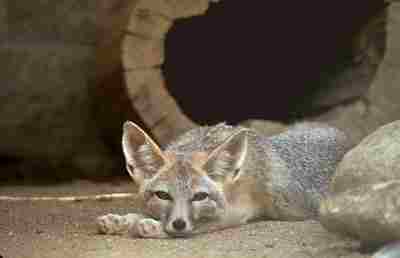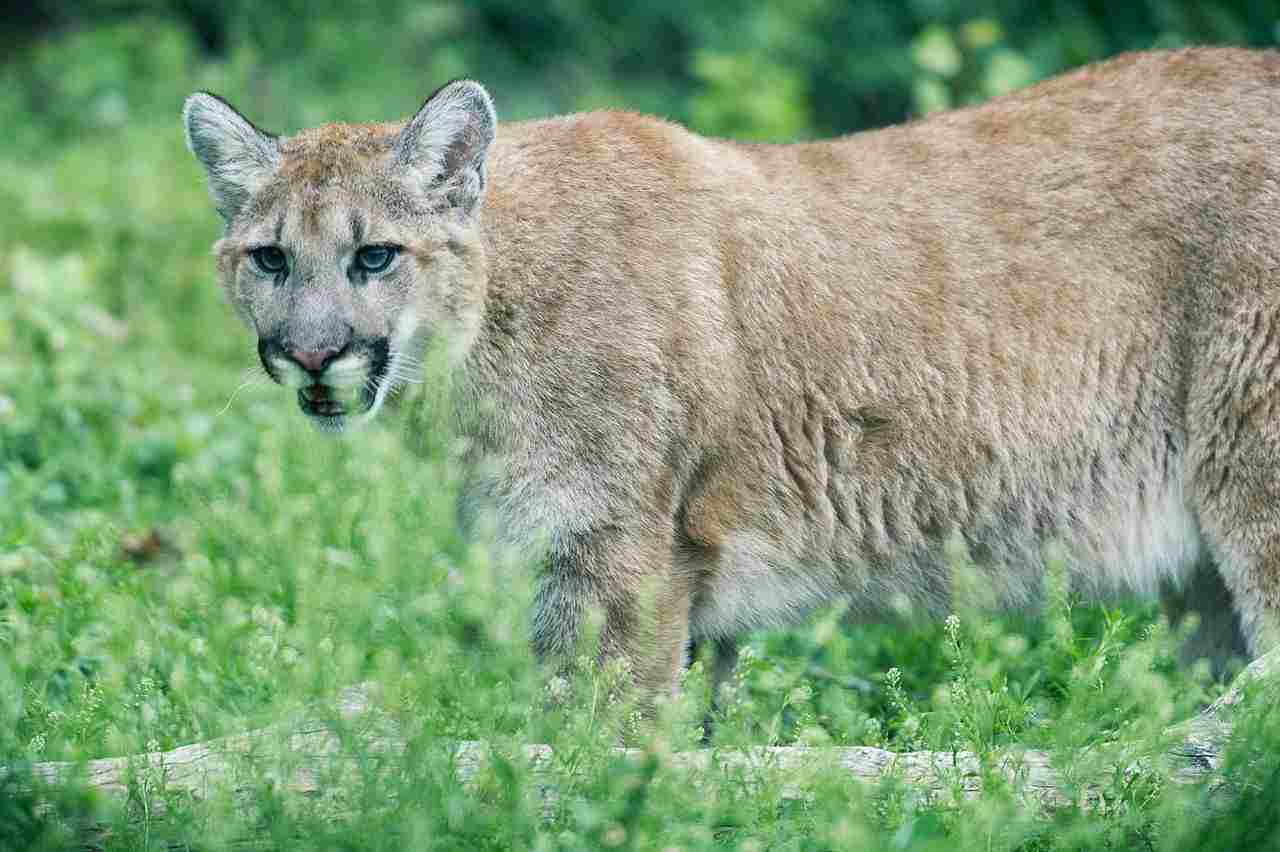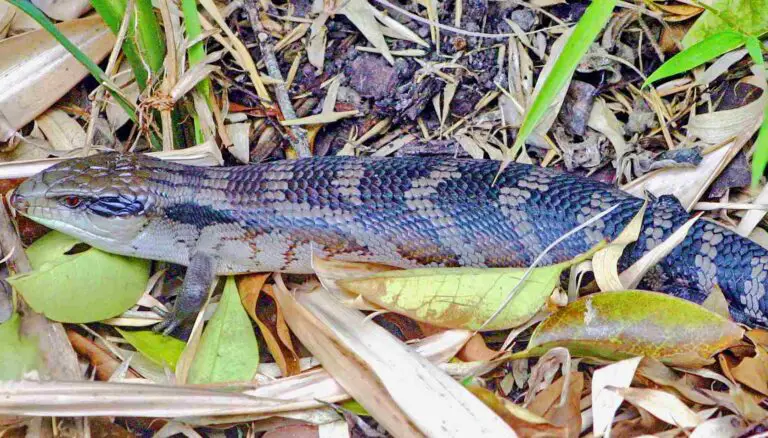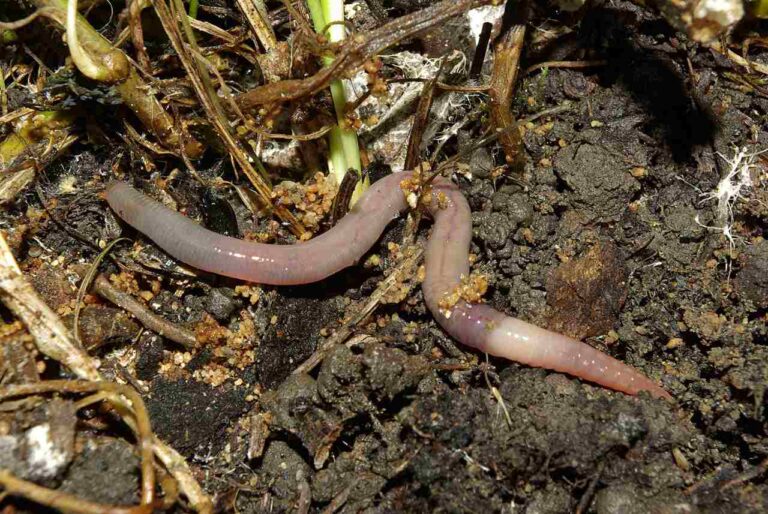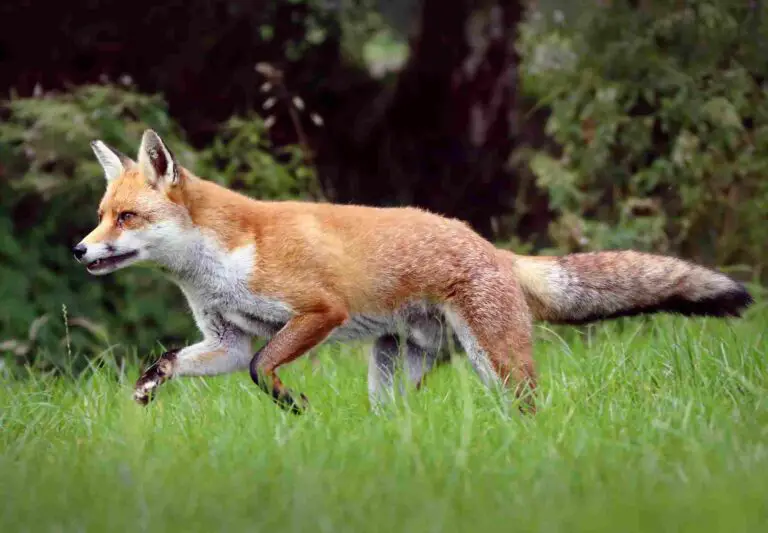23+ Most Dangerous Animals In Florida And Their Characteristics
The most dangerous animals in Florida are those with potent venom or aggressive behavior when threatened, such as the Western Diamondback Rattlesnake and the Arizona Bark Scorpion. Large predators like the Mountain Lion and the Black Bear can also pose risks when defending territory or seeking food. Other potentially dangerous animals include the Great Horned Owl, which can be aggressive when protecting its nest, and the Africanized Honeybee, known for its swarming attacks. To stay safe, it’s crucial to maintain a safe distance from wildlife, avoid disturbing their habitats, and seek immediate medical attention if bitten or stung by venomous creatures.
1. Western Diamondback Rattlesnake
The Western Diamondback Rattlesnake (Crotalus atrox) is one of the most feared and dangerous snakes in Florida due to its potent venom and aggressive demeanor when threatened. Recognizable by the distinct diamond-shaped patterns on its back and the iconic rattle at the end of its tail, this rattlesnake can grow to significant lengths, reaching up to 7 feet. It uses its rattle as a warning sign to ward off predators or intruders. If bitten, a person can experience severe symptoms, including intense pain, swelling, tissue damage, and potentially life-threatening complications if left untreated. While generally avoiding human interaction, this rattlesnake can be found in various habitats, such as forests, deserts, and grasslands. It’s crucial to exercise caution and maintain a safe distance if encountered in the wild.
2. Arizona Bark Scorpion
The Arizona Bark Scorpion (Centruroides sculpturatus) is a venomous scorpion native to North America, known for its potent sting that can cause severe pain, numbness, and even convulsions in extreme cases. Though small in size, typically measuring about 2-3 inches, this scorpion is a formidable predator and can be found in a variety of habitats, including deserts and rocky regions. While generally not aggressive, it can sting when threatened or accidentally disturbed. Medical attention is recommended if stung, especially for children and the elderly, as they are more susceptible to the venom’s effects.
3. Gila Monster
The Gila Monster (Heloderma suspectum) is one of the few venomous lizards in North America, known for its striking black and orange bead-like scales. Although it moves slowly and doesn’t typically pose a threat to humans, its bite can be excruciatingly painful and requires medical attention due to its toxic venom, which is injected through grooves in its teeth. The Gila Monster primarily inhabits deserts and arid environments, preferring to stay hidden in burrows during the hottest parts of the day. Despite its venom, the Gila Monster is a protected species, and encounters with humans are rare.
4. Coral Snake
The Coral Snake, found in Florida, is part of the Elapidae family, which includes some of the most venomous snakes in the world. Recognizable by its bright red, yellow, and black bands, the Coral Snake’s venom is neurotoxic, affecting the nervous system and causing paralysis if not treated quickly. Although it is generally non-aggressive and prefers to avoid confrontation, its venom can be lethal without prompt medical treatment. These snakes are typically found in wooded areas, swamps, and marshes, hiding under debris or in dense foliage. It’s crucial to remember the saying, “Red touches yellow, kills a fellow,” to distinguish it from the non-venomous king snakes, where red touches black.
5. Black Widow Spider
The Black Widow Spider (Latrodectus mactans) is infamous for its toxic venom and distinctive appearance, with a shiny black body and a red hourglass-shaped marking on its abdomen. Native to Florida, this spider is known to inhabit dark, undisturbed areas like sheds, garages, and woodpiles. The venom can cause intense pain, muscle cramps, and other severe symptoms, but bites are rarely fatal when treated quickly. Despite its fearsome reputation, the Black Widow is generally shy and will only bite in self-defense. Caution should be exercised when reaching into hidden or dark places where the spider might be lurking.
6. Brown Recluse Spider
The Brown Recluse Spider (Loxosceles reclusa) is a venomous spider found in Florida, known for its violin-shaped marking on its back and its reclusive nature. This spider’s venom contains necrotizing toxins that can cause severe tissue damage and ulceration, leading to slow-healing wounds. While bites are rare, they often occur when the spider is accidentally disturbed in dark, undisturbed places like closets, basements, and attics. The Brown Recluse tends to avoid human interaction, but if bitten, immediate medical attention is crucial to prevent complications from the venom’s effects.
7. Africanized Honeybee (Killer Bee)
The Africanized Honeybee, commonly known as the Killer Bee, is a highly aggressive hybrid of African and European honeybees, notorious for its swarming behavior and fierce attacks. Found in Florida and other parts of the southern United States, these bees will attack in large numbers if their hive is threatened or disturbed, often resulting in multiple stings. Although a single sting might not be life-threatening, multiple stings can be fatal, especially for those with allergies to bee venom. Africanized Honeybees are known to pursue their targets over long distances, making them a significant hazard in areas where they nest. Avoiding sudden movements near bee colonies and seeking shelter if attacked is crucial for safety.
8. Arizona Mountain Kingsnake
The Arizona Mountain Kingsnake (Lampropeltis pyromelana) is a non-venomous snake found in parts of Florida, often mistaken for the venomous Coral Snake due to its similar red, black, and white banding pattern. Despite its intimidating appearance, this kingsnake is harmless to humans and is known for its docile nature. It primarily feeds on small mammals, birds, and other reptiles, including venomous snakes. The Arizona Mountain Kingsnake is an essential part of the ecosystem, helping control rodent populations and reducing the risk of encounters with venomous snakes. It thrives in a variety of habitats, including forests and rocky areas, and is a popular species among reptile enthusiasts due to its striking colors and gentle disposition.
9. Mojave Rattlesnake
The Mojave Rattlesnake (Crotalus scutulatus) is one of the most dangerous rattlesnakes in Florida, known for its highly toxic venom containing both neurotoxic and hemotoxic components. This combination makes its bite particularly harmful, causing paralysis, respiratory failure, and severe tissue damage. Recognizable by its greenish hue and distinct rattle, the Mojave Rattlesnake is typically found in desert and scrubland habitats. It is aggressive when threatened and uses its rattle as a warning to ward off intruders. If bitten, immediate medical attention is critical to prevent life-threatening complications. Caution should be exercised when exploring areas where this snake might be present, and it’s advisable to wear protective footwear and remain vigilant.
10. Banded Rock Rattlesnake
The Banded Rock Rattlesnake (Crotalus lepidus klauberi) is a venomous rattlesnake found in Florida, characterized by its grayish body with dark bands and its relatively small size compared to other rattlesnakes. Although its venom is less potent than some other rattlesnake species, it can still cause significant pain, swelling, and other adverse effects. This rattlesnake typically inhabits rocky terrains and is known for its ability to blend into its surroundings, making it challenging to spot. While not as aggressive as some other rattlesnakes, it will rattle its tail and strike if it feels threatened. Caution should be exercised when exploring rocky areas, and it’s advisable to watch where you step to avoid accidental encounters with this well-camouflaged snake.
11. Sonoran Sidewinder Rattlesnake
The Sonoran Sidewinder Rattlesnake (Crotalus cerastes cercobombus) is a unique rattlesnake species found in desert regions of Florida, known for its distinctive sidewinding movement, which allows it to traverse sandy terrain with ease. This rattlesnake has a tan or light brown color with dark patterns, providing excellent camouflage in its natural habitat. Although its venom is not as potent as some other rattlesnakes, it can still cause severe pain, swelling, and other symptoms. The Sonoran Sidewinder is generally non-aggressive but will rattle its tail and strike if it feels threatened. Caution should be exercised when exploring desert regions, and wearing protective footwear can help prevent accidental encounters with this elusive snake.
12. Desert Centipede
The Desert Centipede (Scolopendra polymorpha) is a large and venomous centipede found in Florida, known for its aggressive behavior and potent bite. This centipede can grow up to 6 inches or more, with a multi-segmented body and numerous legs, giving it a fast and slithering movement. While it generally preys on insects and small animals, it can bite humans if provoked or threatened, causing intense pain, swelling, and other adverse effects. Although bites are rarely life-threatening, medical attention may be needed to manage the symptoms. The Desert Centipede typically inhabits arid and rocky areas, and caution should be exercised when reaching into crevices or other hidden spots where it might be hiding.
13. Tarantula Hawk Wasp
The Tarantula Hawk Wasp (Pepsis spp.) is a large wasp found in Florida, known for its striking appearance and powerful sting, which is considered one of the most painful insect stings in the world. This wasp has a vibrant orange or red coloration with black wings and can grow up to 2 inches in length. Despite its fearsome sting, the Tarantula Hawk Wasp is generally non-aggressive toward humans and primarily hunts tarantulas to feed its larvae. If stung, a person may experience intense pain, swelling, and redness, but the effects are generally short-lived and do not require medical attention. However, individuals with allergies to insect stings should exercise caution and seek medical help if necessary. This wasp is usually found in desert regions and areas with a high tarantula population.
14. Sonoran Coral Snake
The Sonoran Coral Snake (Micrurus distans) is a venomous snake found in Florida, known for its vibrant red, black, and white banding pattern, similar to other coral snakes. Its venom is highly neurotoxic, causing paralysis and respiratory failure if not treated quickly. Despite its dangerous venom, the Sonoran Coral Snake is generally non-aggressive and prefers to avoid confrontation, usually biting only when threatened or handled. This snake can be found in various habitats, including deserts and scrublands, often hiding under rocks or in crevices. If bitten, immediate medical attention is crucial to prevent life-threatening complications. Recognizing the distinct banding pattern and avoiding direct contact with this snake is essential to staying safe in its natural habitat.
15. Western Black-Legged Tick

The Western Black-Legged Tick (Ixodes pacificus) is a small arachnid found in parts of Florida, known for its role in transmitting Lyme disease and other tick-borne illnesses. This tick feeds on the blood of mammals, birds, and reptiles, and it can transmit bacteria that cause Lyme disease, leading to symptoms like fever, fatigue, and joint pain. The Western Black-Legged Tick is typically found in wooded or grassy areas, where it waits on vegetation to latch onto a passing host. To avoid tick bites, it is essential to wear long sleeves and pants, use insect repellent, and conduct tick checks after spending time in tick-prone environments. If bitten, the tick should be carefully removed, and medical attention should be sought if symptoms of tick-borne illness develop.
16. Coyote
The Coyote (Canis latrans) is a highly adaptable carnivorous mammal found in various parts of Florida, known for its cunning and resourcefulness. Coyotes are opportunistic predators and scavengers, capable of thriving in urban and rural environments. They typically hunt small mammals but can also prey on domestic pets or livestock if given the chance. While they generally avoid human interaction, coyotes can become a threat if they lose their fear of people due to feeding or other interactions. To reduce the risk of coyote encounters, it’s important to secure trash, keep pets indoors or supervised, and avoid feeding wild animals. If confronted by a coyote, making loud noises and standing your ground can help deter it from approaching.
17. Mountain Lion (Cougar)
The Mountain Lion (Puma concolor), also known as the Cougar, is a large and powerful predator found in parts of Florida. These big cats are solitary and territorial, typically avoiding human contact. However, when their habitat is encroached upon, they can pose a danger to humans and livestock. Mountain Lions are agile and capable of quick, powerful attacks, primarily preying on deer and other large mammals. If encountered in the wild, it’s crucial to remain calm, maintain eye contact, and make yourself appear larger to avoid triggering an attack. Retreat slowly without turning your back on the cougar, and if attacked, fight back with whatever means are available.
18. Bobcat
The Bobcat (Lynx rufus) is a medium-sized wild cat found in Florida, known for its tufted ears and short, “bobbed” tail. While generally elusive and avoiding human interaction, the Bobcat can become aggressive if cornered or protecting its territory. It primarily preys on small mammals but can also attack pets or livestock if food sources are scarce. Bobcats are typically found in wooded and rural areas but can also adapt to suburban environments. To minimize the risk of bobcat encounters, avoid leaving pet food outside, secure garbage, and keep pets indoors or supervised. If encountered, making loud noises and backing away slowly can help prevent aggression.
19. Javelina (Peccary)
The Javelina (Pecari tajacu), also known as the Peccary, is a medium-sized mammal found in Florida, resembling a wild pig. Javelinas are social animals that travel in groups and can become aggressive when threatened or when defending their young. Although they primarily feed on plants and roots, they have sharp tusks that can cause injury if they charge. Javelinas are typically found in desert and scrubland habitats, and encounters with humans can occur near urban areas where food sources are available. To avoid javelina aggression, it’s important to keep a safe distance, avoid sudden movements, and refrain from feeding them.
20. Great Horned Owl
The Great Horned Owl (Bubo virginianus) is a large and powerful owl found in Florida, known for its tufted “horns” and piercing yellow eyes. While not typically dangerous to humans, these owls can be aggressive when protecting their nests or hunting for prey. They are skilled predators that hunt small mammals, birds, and reptiles, using their sharp talons and beak to capture and kill. Great Horned Owls are primarily nocturnal, and their distinctive hooting calls can be heard at night. To avoid conflicts, it’s best to keep a safe distance from nesting sites and avoid disturbing their territory.
21. Elk
Elk (Cervus canadensis) are large deer species found in certain parts of Florida, known for their impressive antlers and large size. Although generally docile, elk can become aggressive during the breeding season, known as the rut, when males compete for mates. They may also be protective of their young, making it dangerous to approach them. Elk typically inhabit forested and mountainous regions, but they can wander into human-populated areas in search of food. To prevent conflicts with elk, it’s crucial to keep a safe distance, avoid loud noises, and never attempt to feed them.
22. Deer
Deer, particularly the White-tailed Deer (Odocoileus virginianus), are common in Florida and generally harmless. However, they can pose a danger on roads, where collisions with vehicles are a significant risk. During the breeding season, males may become more aggressive and territorial, leading to potential conflicts with humans. Additionally, deer can carry ticks that transmit Lyme disease and other tick-borne illnesses. To reduce the risk of deer-related accidents and conflicts, it’s important to be cautious when driving in areas where deer are known to roam, particularly at dawn and dusk.
23. Black Bear
The Black Bear (Ursus americanus) is the most common bear species in Florida, known for its large size and dark fur. While Black Bears are generally shy and avoid human contact, they can become aggressive if they feel threatened or if they are protecting their young. They are omnivorous and may be attracted to human food sources, leading them into residential areas. If encountered, it’s crucial to stay calm, make noise to scare the bear away, and never run. Properly securing trash and avoiding feeding bears can help reduce the risk of conflicts.
24. Mexican Wolf
The Mexican Wolf (Canis lupus baileyi) is a subspecies of the Gray Wolf found in parts of Florida, known for its distinctive gray and brown fur and its role as a top predator. Mexican Wolves are social animals that live in packs, primarily preying on elk, deer, and other large mammals. While they generally avoid human interaction, conflicts can occur if they venture into populated areas or if humans encroach on their territory. To avoid wolf encounters, it’s important to keep pets indoors or supervised, avoid feeding wildlife, and maintain a safe distance when in wolf territory. If confronted by a wolf, standing your ground and making noise can help deter aggression.
| Number |
Dangerous Animal
|
| 1 |
Western Diamondback Rattlesnake
|
| 2 |
Arizona Bark Scorpion
|
| 3 | Gila Monster |
| 4 | Coral Snake |
| 5 |
Black Widow Spider
|
| 6 |
Brown Recluse Spider
|
| 7 |
Africanized Honeybee (Killer Bee)
|
| 8 |
Arizona Mountain Kingsnake
|
| 9 |
Mojave Rattlesnake
|
| 10 |
Banded Rock Rattlesnake
|
| 11 |
Sonoran Sidewinder Rattlesnake
|
| 12 |
Desert Centipede
|
| 13 |
Tarantula Hawk Wasp
|
| 14 |
Sonoran Coral Snake
|
| 15 |
Western Black-Legged Tick
|
| 16 | Coyote |
| 17 |
Mountain Lion (Cougar)
|
| 18 | Bobcat |
| 19 |
Javelina (Peccary)
|
| 20 |
Great Horned Owl
|
| 21 | Elk |
| 22 | Deer |
| 23 | Black Bear |
| 24 | Mexican Wolf |

